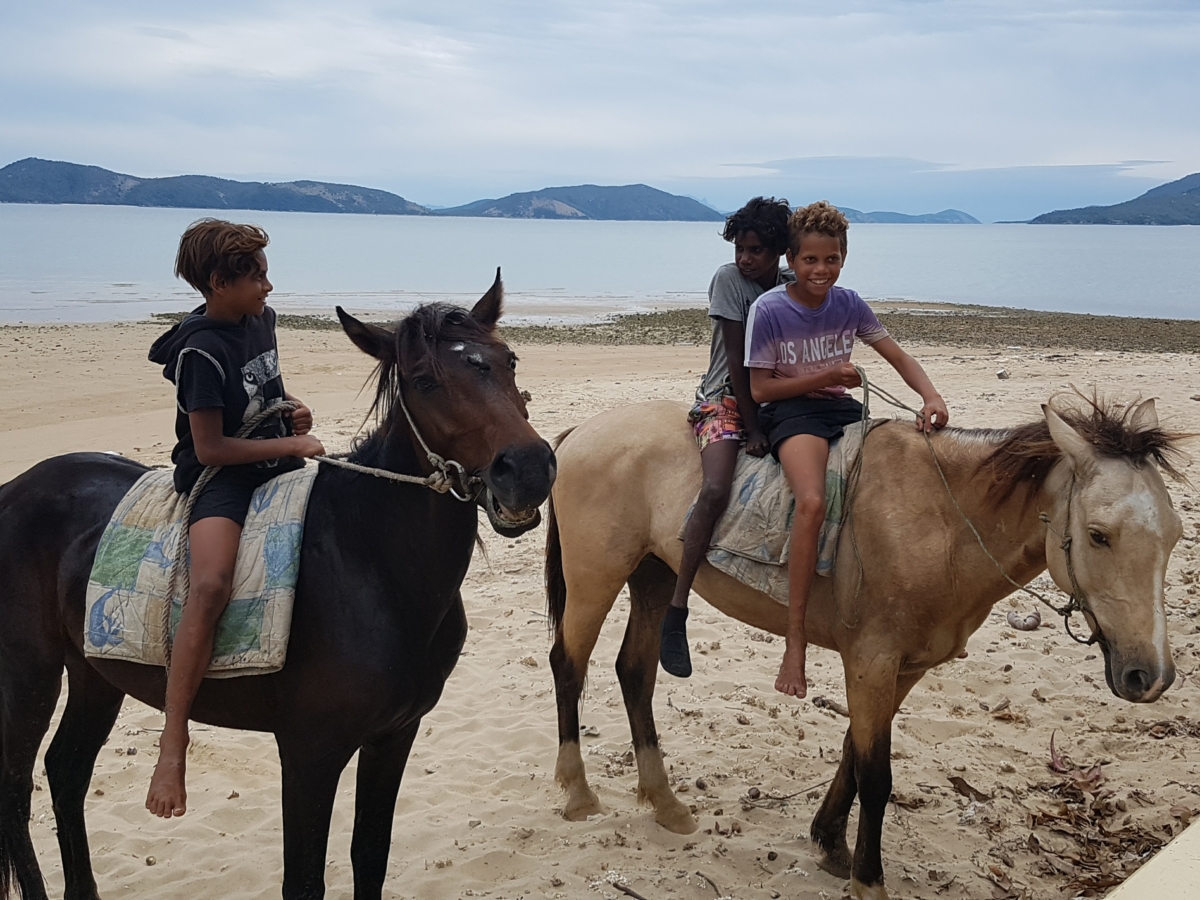As the title of this post suggests, Great Palm Island is a product of 50 years worth of Aboriginal and Torres Strait Islander people being forcibly removed from their country and segregated on Great Palm Island. From this atrocity the Bwgcolman people were born.
When we talk about “Palm Island” we are talking about Great Palm Island; the biggest of the islands in the Greater Palm Islands Group. There are ten islands plus five micro-islands which make up the Greater Palm Island Group; Great Palm, Curra-cao, Fantome, Havannah, Brisk, Esclipse, Esk, Barber, Falcon, and Fly Islands, as well as Paluma Rock, Albino Rock, Dido Rock, Chilcott Rocks, and Hayman Rock.
Great Palm Island is approximately 65km northwest of Townsville, inside the Great Barrier Reef Marine Park. As such is zoned as Habitat Protection to the West, and Conservation Zone everywhere else. The ten main islands of the group are under the Jurisdiction of the Palm Island Aboriginal Shire Council. There are approx less than 2.5k people living on Great Palm Island.
Palm’s history starts with the Manbarra People; the traditional land owners of Palm Island. The Manbarra People are also the traditional owners of Magnetic Island (click here to read about our trip to Maggie).
Records show that Manbarra people called the island Burgu-mah. The Great Palm Island Group and Magnetic Island are all part of a Dreamtime story about the Rainbow Serpent which created the lands.
People from the Greater Palm Island Group, and Magnetic Island were linked to each other, and to the mainland, linguistically and socially, from frequent trade and travel, especially for large gatherings on the mainland. The local Language groups became linked through kinship connections which would later serve as an information sharing network as a response to the invading Europeans.
The first historical records of Palm Island is of course the journals from the British Royal Navy Personnel; namely Captain James Cook in 1770, who named the island Palm Island. At this time there were approximately 200 Manbarra people on Palm Island.
There is no mention of the Palm Island Group then until 1819, when Captain Phillip Parker King surveyed the east coast of Australia. His journal reads:
Near our landing-place were some natives’ huts and two canoes; the former appeared to have been recently occupied, and were very snug habitations. They were of a circular shape, and very ingeniously constructed by twigs stuck in the ground and arched over, the ends being artfully entwined so as to give support to each other; the whole was covered with a thatch of dried grass and reeds.
In 1883, 9 people (6 men, 2 women and a child) from the Manburra tribe were kidnapped by United States circus agent R A Cunningham. They were taken to the United States to become travelling exhibits in the Barnum and Bailey Circus for his next exhibition; Ethnological Congress of Strange Tribes. One of the men kidnapped from Palm Island was known as Kukamunburra (or Tambo). In 1993 his mummified body was found in the basement of a funeral parlour in Cleveland, Ohio. He was returned to Palm Island and laid to rest with full ceremonial rites in 1994. Head to Australian Geographic if you would like to learn more about the fates of the people kidnapped from Palm Island.

At the end of the 19th century there were approximately 50 people recorded as living on Palm Island.
Palm Island was gazetted as an aboriginal reserve in June 1914, and 1918 saw the first transfer of aboriginal people to Palm Island. From then on, it was recorded that 3,950 people were displaced and forcibly removed from their country to Palm Island.
Fantome Island, one of the islands in the Greater Palm Island Group, was also gazetted as an aboriginal reserve in 1925. The Fantome Island Lock Hospital was established in 1926 to treat patients suffering from venereal disease, and by 1937 had become a health clearing station for those being transferred to Palm Island. Fantome Island was also used for tuberculosis patients as well as convalescents from the mainland.
We recently visited Palm Island as part of the Palm Island Day Tour with Sealink Townsville. The history and arts tour of Greater Palm showcases the culture of the now Bwgcolman people. You will spend the day with a local guide listening to the history of the islands, and what makes this place so unique.
Try your hand at traditional dance, and local arts & crafts, and eat some traditional Palm food for lunch.
Sealink also offer a snorkel package where you can spend the day swimming and relaxing among the Palm Island Group. We had a beautiful day at Palm and would happily head back for a weekend to explore some more.
The tour cost $149 per adult and has limited departure dates throughout the year. Head to the Sealink website for more information!
If you like it, you should pin it!

